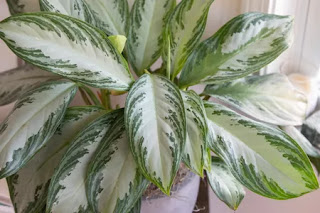Indoor HousePlants
But where to begin?
Not all people have backyards, but they can start somewhere. If they're growing their plants indoors, you can put it on your window sill or the front porch, or in your backyard.
We are busy but now; that we are staying in our homes more, we can take care of a plant, and these plants are hard to kill. But remember, some need more sunlight than others, needs little water, and don't forget those pesky insects.
It's relaxing and a nice hobby and makes you happy and welcoming home.
 |
The Spruce |
Aloe (Aloe Vera)
The Spruce / Michael MarquandCast Iron Plant (Aspidistra relation)
Chinese evergreen (Aglaonema commutated)
The Chinese evergreen plant is extremely forgiving and can adapt to most room conditions, although it does not like drafts or prolonged temperatures below 60 F. It prefers low or indirect sunlight. Allow the soil to remain dry for a few days, before re-watering. Most varieties have some type of variegated leaf, making them all the more attractive. (USDA Zones 6 - 9)
Christmas Cactus (Zygocactus or Schlumbergera)
The Christmas Cactus is a trailing member of the cactus family that produces deep pink or red flowers in early winter. This is the type of plant that seems to do its best when ignored. It can handle low light, but you'll get more flowers in bright light. Pruning after blooming will keep the plant bushy and full.
You can force your Christmas cactus to bloom in December by keeping it in complete darkness for 12 hours a night, beginning in about mid-October. Leave it in the dark until buds appear. An even easier method is to subject it to cool temperatures (50 - 55 degrees F.) starting in November. Just leave it on a windowsill at home while the heat is off while you are at work. You should see flower buds forming in weeks. (USDA Zones 9 - 11)
Another way to add color to your home is with the relatively easy-care Mexican shrimp plant.
Dumb Cane (Dieffenbachia)
The variegated leaves of Dumb Cane can be extremely attractive and it is not a particularly difficult plant to grow. It does like the temperature on the warm side, so avoid placing it near windows and drafts. Use caution when growing this plant around pets and children. It gets its name from the milky sap it exudes. The sap can be a skin irritant and, if ingested, it can cause a temporary inability to speak. (USDA Zones 11+)








Comments
Post a Comment